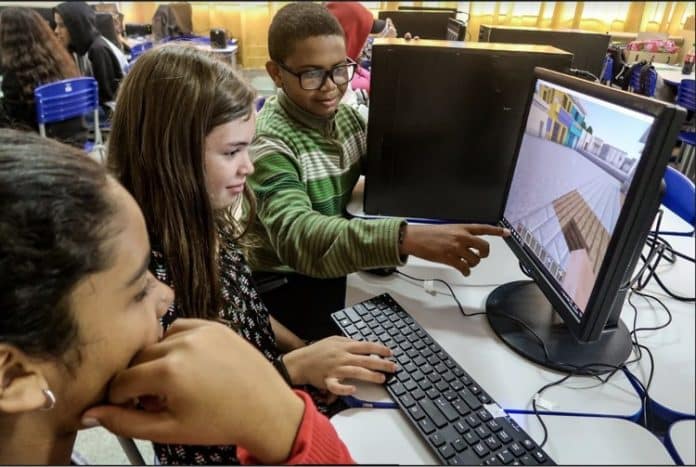This World Cities Day, we take a look at the innovative role of Minecraft, a leading video game, in reshaping urban spaces and fostering inclusivity in urban planning. The Block by Block initiative, a collaborative effort between Mojang, the studio behind Minecraft, Microsoft, and UN-Habitat, artfully bridges the world of video games and urban planning to transform and democratize urban development.
Introducing the Block by Block Initiative
The Block by Block initiative is rooted in the belief that public spaces are crucial to building community cohesion, promoting health, and ensuring the well-being of all citizens. The initiative taps into the potential of Minecraft, a popular sandbox video game with over 170 million monthly active players, as a participatory design tool, enabling community members to actively engage in the transformation of neglected urban spaces.
The core essence of the Block by Block methodology is its participatory nature. It champions the active involvement of local residents, many of whom would not traditionally have a say in public projects. The initiative ensures that their views are considered in urban development, creating a more democratic and inclusive urban planning process.
The significance of the Block by Block initiative, which directly contributes to Sustainable Development Goals 11, has been recognized and integrated into UN-Habitat’s Global Public Space Programme. The programme, which began in 2012, is a strategic endeavour to craft local policies, plans, and designs that champion safe, inclusive, and universally accessible public spaces.
But, what exactly is Minecraft?
For the uninitiated, Minecraft is a globally renowned video game which is known for its unique block-based construction mechanics. In this virtual sandbox, players can craft entire worlds, building complex structures block by block in a 3D environment. It is this simplicity and accessibility that makes Minecraft an excellent tool for public space planning. Participants can easily manipulate their virtual environment, experimenting with different design elements to create a space that meets the needs and desires of the community. This hands-on approach ensures that the final design is both reflective of the community’s values and conducive to promoting social interaction, cultural expression, and inclusive living.
Empowering Communities and Fostering Inclusivity
Since its inception, the Block by Block initiative has made significant strides in transforming urban spaces across the globe. It has helped revitalise urban neighbourhoods in 37 countries, impacting the lives of more than 2.3 million people. Whether it’s a recreational space in Khulna, Bangladesh, building quality of life in Haiti, or creating safer streets for teenage girls in Hanoi, Vietnam, communities far and wide have witnessed the tangible benefits of this innovative approach to urban planning.
In Europe, the Municipality of Pristina, Kosovo, was one of the first sites selected by UN-Habitat to test the Block by Block Methodology for upgrading public space. The initial project focused on revitalizing a former green market in Sunny Hill, one of Pristina’s largest and most populous neighbourhoods.
Worldwide, more than 30,000 community members—including women, children, elders, refugees, and the disabled—have participated in Block by Block workshops. The initiative has proven particularly effective in empowering marginalized communities. It promotes inclusivity, environmental sustainability, and safety in public spaces, aligning with the principles of social cohesion and sustainable living.
Designed for and by the people
The Block by Block initiative brings together technology, creativity, and community participation. Through this initiative, a video game – Minecraft – has transcended its digital boundaries, becoming an example of the boundless possibilities that can arise when we approach urban challenges with innovation, inclusivity, and collaboration at the forefront.
By facilitating participatory urban planning, empowering marginalized communities, and contributing to the achievement of the Sustainable Development Goals, the initiative is helping to shape more inclusive, resilient, and vibrant urban spaces. As we celebrate today’s observance and look to the future of our cities, the Block by Block methodology offers a promising path forward for our cities to be designed for and by the people who inhabit them, fostering a brighter urban future for all.
Additional links:
The Best Job in the World: How I became a United Nations Video Game Expert

